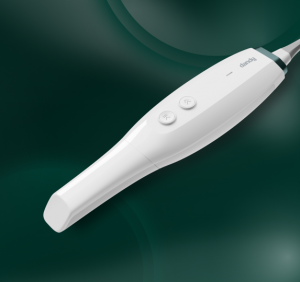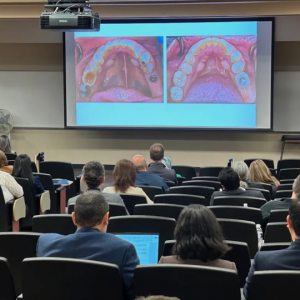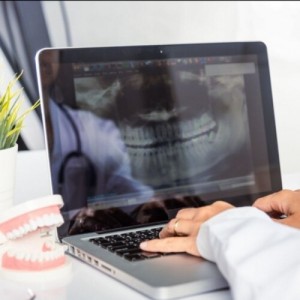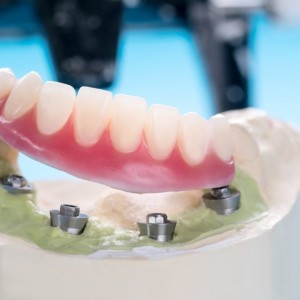
Materials for digital dentistry: classification and clinical features
Lorenzo Breschi
CAD/CAM technology has been used in industry for long time and has increased in popularity over the past years in dentistry from making impressions, casts, provisional and final restorations. The digital process is usually time efficient and eliminates the need for impression materials, and in most cases, allows the delivery of the final product in a single appointment.
Today, the dental market proposes several CAD/CAM systems and, for that reason, it is crucially important for the restorative team to understand the spectrum of digital materials that are available in order to ensure the optimal treatment outcome for the patients.
A recent review from Prof. Sulaiman published on the Journal of Esthetic and Restorative Dentistry at the beginning of the current year and entitled “Materials in digital dentistry-A review” described in details the materials utilizing CAD/CAM technologies, their properties and accuracy compared to conventional methods and materials used in restorative dentistry.
The author divided the materials into subtractive (SM) and materials produced by additive manufacturing (AM).
Talking about SM, Sulaiman explained that, usually, they involve milling of the designed volumetric shape from a presintered or sintered material using a milling machine that performs either in a wet or dry condition, that moves in defined paths and is referred to as 3‐, 4‐, 5‐axes milling systems. These systems could be either laboratory or chairside. The subtractive materials described in the paper include wax, poly(methyl methacrylate) (PMMA), composite resins, high‐performance polymers, metals, and ceramics. As regard the second category, the one produced by additive manufacturing, it employs 3D printing, a recent and emerging technology that has gained a lot of interest in the dental field due to its wide‐range capabilities for providing surgical guides, temporary restorations, occlusal splints, bite‐guards, scaffolds, and orthodontic appliances.
Indeed, AM allow the production of pieces by adding materials (composites, metals, and ceramics) layer‐by‐layer, based on a computerized 3D model.
The review concluded that CAD/CAM technology has changed the way dentistry is practiced, and care is delivered. In particular, laboratory and chairside milling units are described as more versatile and capable of milling multiple materials with properties that may ensure a long-term clinical success. On the other hand, additive manufacturing is a good alternative and a promising manufacturing method of dental restorations and appliances. To be more precise, the additive techniques allows for fabrication of more sophisticated build structures without excessive force and much less non-recyclable waste when compared to SM techniques
However, beside these positive aspects, AM have a shorter track record of clinical evidence compared to SM materials.
For additional informations: Materials in digital dentistry-A review.
 Related articles
Related articles
Digital Dentistry 04 November 2025
Digitalisation is an expanding field in dentistry and implementation of digital teaching methods in dental education is an essential part of modern education.
News 03 November 2025
Dandy, a fully digital dental lab, today unveiled two new products for digital dentistry: the revolutionary Dandy Vision intraoral scanner and the powerful.
Editorials 02 October 2025
U-M School of Dentistry hosts national symposium on digital dentistry education
The University of Michigan School of Dentistry hosted a national Digital Dentistry Educators Symposium last week that drew faculty and leaders from 35 dental schools around the country.
Digital Dentistry 29 August 2025
Digital dentistry: The new state of the art — Is it disruptive or destructive?
Summarizing the new state of the art of digital dentistry, opens exploration of the type and extent of innovations and technological advances that have impacted – and improved – dentistry.
Endodontics 15 August 2025
Feasibility of Implementing Digital Dentistry Section in Dental Clinic of a Military Centre
Digital dentistry is not the wave of the future, it is happening now. Whether a dentist embraces the new technology determines the quality of treatment and possibly his future; for this reason,...
 Read more
Read more
Prosthodontics 17 November 2025
The purpose of this report is to describe a new technique to fabricate and deliver an implant-supported fixed prosthesis to the patient on the day of surgery, and to propose a protocol for the...
Editorials 17 November 2025
The Langkamp Allison Award recognizes a Pitt Dental Medicine third-year dental student interested in pursuing a career in dental education.
Products 17 November 2025
VELMENI today unveiled VELMENI Voice, an AI-driven voice recognition tool designed to transform periodontal charting and clinical documentation.
News 17 November 2025
Angelalign Technology Inc. (6699.HK) (“Angel”) recently announced the expansion of its flexible iOrtho platform to include direct integration with the Dexis, Shining 3D, and Panda scanners.
News 17 November 2025
Following the first FDA clearance for technology that measures internal mobility in teeth, Perimetrics CEO and Chairman Robert Hayman is once again leading dentistry into a new era with InnerView, a...













